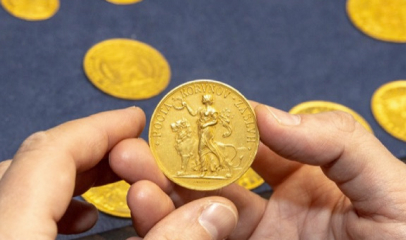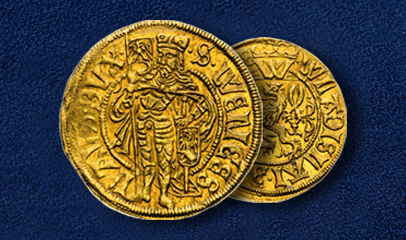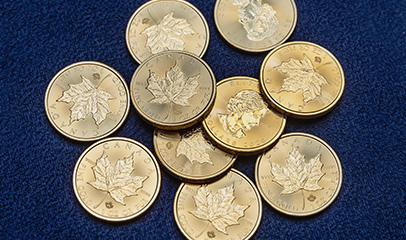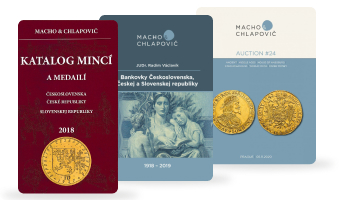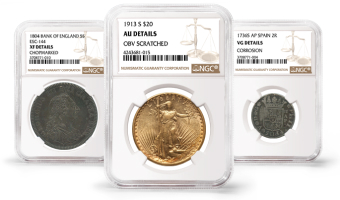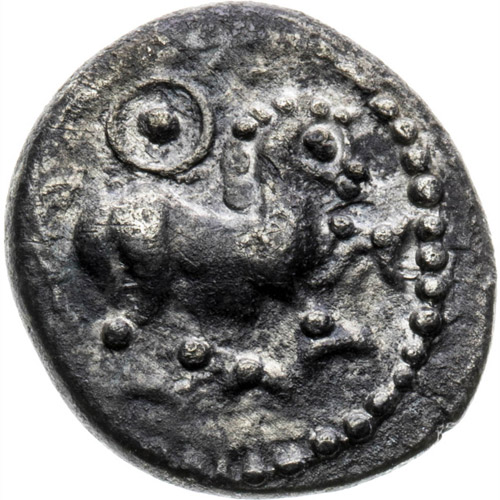
Celtic coinage is very varied. Collectors and researchers are therefore constantly surprised by new types of coins that broaden our knowledge of Celtic coinage. Many types and denominations of Celtic coins only exist in the form of a few specimens. For a number of coins, it is not even clear when and where they were minted. Collecting Celtic coins can therefore become a great collecting adventure.
In the 28th auction an exceptional small Celtic silver coin will be auctioned as item No. 10. It is an obol minted sometime in the late 3rd or early 2nd century BC, almost certainly in the territory of south-western Slovakia. It was published by Ručka in as early as 2012 (Folia Numismatica 26/2, p. 127), but it has never been auctioned. It is not even listed in the popular collector’s catalogue of Kostur and Gášpár from 2018. The coin can be attributed to the Slovak Celts primarily on the basis of the artistic design of its obverse side. It is completely identical to the horse/horse type obols. A horse/horse type obol was published in 1933 by Rudolf Paulsen in his major work Die Münzprägungen der Boier. He classified it, without further comment, as Boii coinage or related coinage; he knew of a specimen found in central Czechia at the Stradonice oppidum. A small number of horse/horse type coins have been found in recent decades in Moravia. Notably, four specimens from the Němčice settlement have been published (Kolníková 2012). Of course, the coins made their way to Moravia and Czechia in ancient times through trade, but they were undoubtedly minted in the territory of south-western Slovakia, an area where there have been dozens of finds of individual coins. A larger number of found specimens come, for example, from the vicinity of the village of Tvrdošovce near Nitra (Budaj – Furugláš, Bazovský, Čambal 2019). Horse/horse type obols were undoubtedly minted in large quantities, as there are a number of pictorial variants indicating the large number of dies used and the long period of minting. It is not entirely clear whether these obols can be assigned to a specific type of tetradrachm, as a small denomination within a single coin series produced under a single minting authority. Most likely, they can be associated with rare tetradrachms of the Slovak type (Ručka 2012).
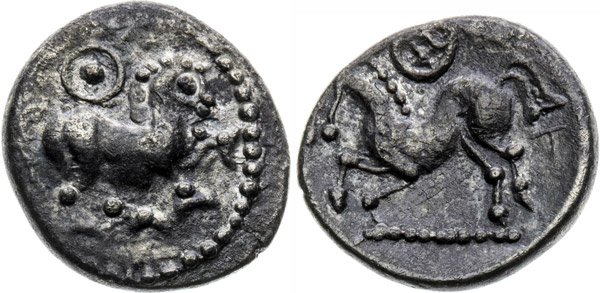
The reverse of the auctioned obol is quite unique
Although it also depicts a horse, it clearly differs from the usual design of horse/horse type obols. It shows a very finely drawn horse in a graceful dynamic stance. Above the horse, there is an unclear symbol in a circle and below the horse, there is a line of tiny beads. There is also a T-shaped sign under the horse’s tail. The whole design is precisely executed in terms of craftsmanship and style and speaks to the extraordinary skills of the die maker. Analogies to the reverse image of this rare obol can be found on East Celtic silver tetradrachms of various types from the wider Danube region. Noticeable pictorial elements include in particular the linearly elongated head, the distinctly curled body, the circular symbol above the horse, the bead line below the horse and the letter-shaped sign. This stylistic proximity, however, is only indicative of the sharing of pictorial designs within the wider East Celtic area; the reverse of the obol cannot be assigned to any particular coinage, even in terms of place and time of minting.
The coin weighs 0.81 g, while the specimen published by Ručka weighs 0.79 g. These weights are at the upper end of the range of usual weights for horse/horse type obols. The high quality and stylistic purity of the two known specimens may suggest that this is a coin from the early period of horse/horse type obols or even a type of obol whose minting immediately preceded the horse/horse type obols.
AUTHOR: Tomáš Smělý, auction specialist

Tomáš is an auction guarantor for Celtic, Greek, and Roman coins, as well as Czech medieval coins and Habsburg coins until 1657 (with the exception of Transylvanian and Hungarian coinage), and also a guarantor for foreign coins up to the middle of the 17th century. He became acquainted with numismatics thanks to his grandfather, who, once retired, devoted his free time to collecting coins. During his grandson’s frequent visits, he introduced him to his modest collection and led him to read numismatic literature. Since then, Tomáš has been heavily involved in numismatics, even at an academic research level. He regularly lectures at conferences in the Czech Republic and abroad, and publishes scholarly articles. He is considered one of the leading experts in Central European Celtic coinage and Czech coinage of the 16th and early 17th centuries.


